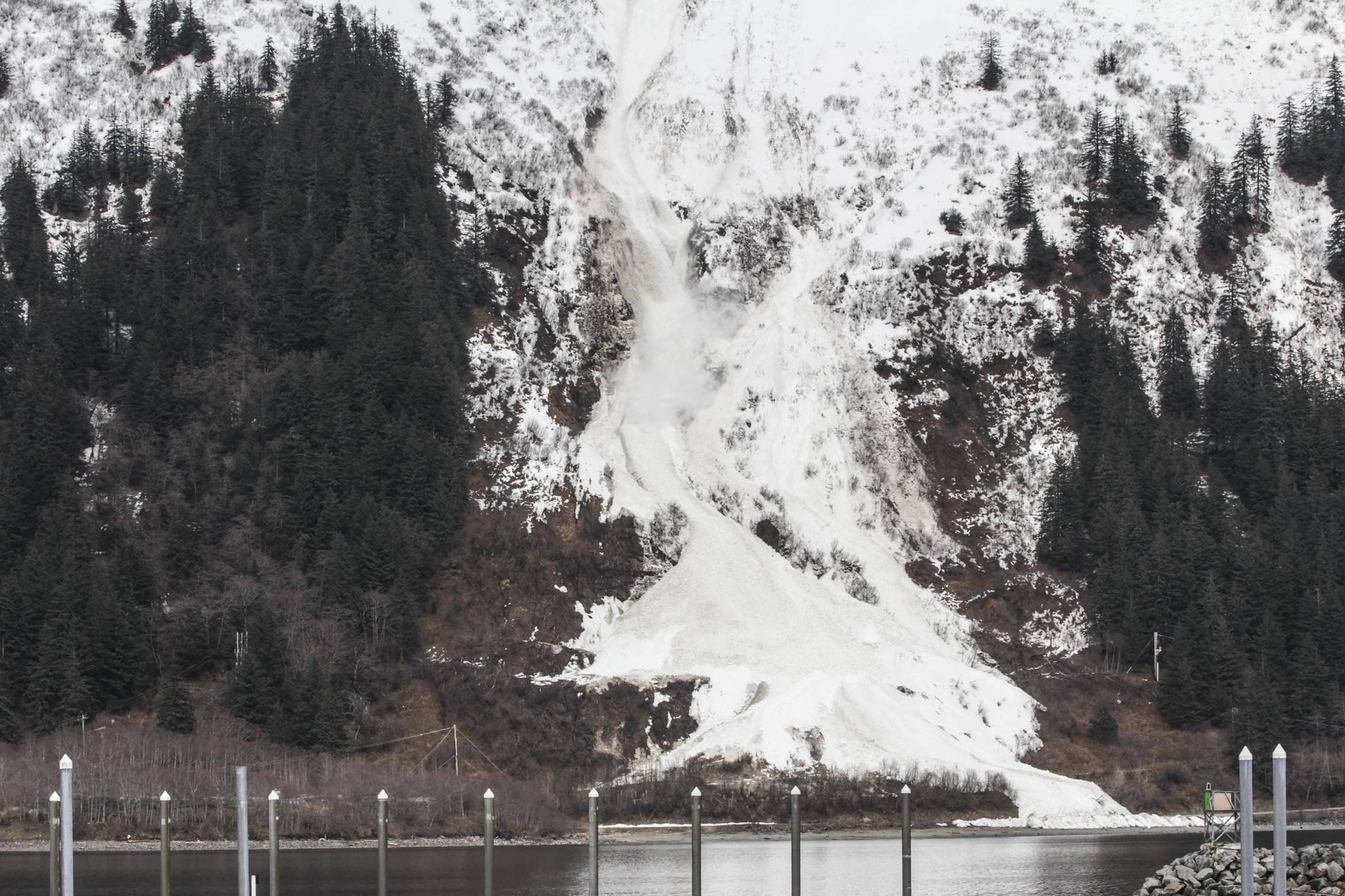As spring finally approaches, the risk of avalanches this season will abate as the snow melts.
But snow returns each winter. And more variable winters do not ease forecasting, said Juneau’s avalanche expert.
“It’s getting more dynamic. Some years might be better, some years might be worse,” said City and Borough of Juneau emergency program manager Tom Mattice in a phone interview. “It’s getting more difficult to predict.”
Juneau had a lively avalanche season in 2020-2021, including city-recommended evacuations held in February from high-risk areas on Behrends Avenue.
Mattice recently delivered what he termed a state of the union set of recommendations to the Juneau Lands, Housing, and Economic Development Committee. The recommendations were derived from a study of Juneau’s avalanche risk by the Swiss Institute for Snow and Avalanche Research, Mattice said.
“The bottom line is we’re doing to the best we can with our limited budget,” Mattice said. “We try to provide as much information as we can with the staffing and resources we have available.”
Among suggestions included in Mattice’s report are investigating the ability of the city to get grants to support buybacks of the most high-risk houses in the Behrends Avenue avalanche chute. The city is currently investigating this option for the highest-risk house, viewing it as a pilot project, according to Mattice’s report.
“They’ve bought vacant land in hazard zones before. They haven’t bought homes in hazard zones before,” Mattice said. “We have an opportunity with our most damage-prone home.”
Other recommendations include improved avalanche education, improving monitoring stations, and reevaluating the predicted avalanche paths, according to the report. The report also notes that a major avalanche would cut access in or out of downtown via Glacier Highway or Egan Drive, and that a second crossing would alleviate the risk of being hamstrung in such an event.
“That’s why we have an outstanding study in draft form,” Mattice said. “The ‘70s avalanche maps were done by hand-done equations.”
Improved data-gathering by relevant organizations are also improving models and predictions, Mattice said.
Rainier winters, warmer temps
Looking at climate trends in Southeast Alaska, Juneau can expect winters that gradually get wetter and slightly warmer, said Rick Thoman, Alaska climate specialist with the Alaska Center for Climate Assessment and Policy, part of the University of Alaska Fairbanks.
“If summers stay on average about where they are and the precipitation is going up, that means we get more precipitation in other parts of the year. For example, right now,” he said during a phone interview in March. “This could be a sign of the future, but we have to keep in mind that the year to year variability is not going to go away.”
Year to year variability means that there will continue to be good years and bad years, Thoman said.
“The early part of winter, it was wet but warm, with comparatively little snow for Juneau,” Thoman said. “For the second half, it was wet but below normal temperature. That kind of inter-winter variation is going to continue.”
Higher precipitation rates at altitudes may or may not make a difference to the risk, Mattice said.
“Having a lot of rain could mean having a lot of rain. And having a lot of rain could mean having a lot of snow,” Mattice said. “Oftentimes more precipitation means a more homogeneous snowpack. It is such a wild card.”
The high-risk period in February was caused by a hard, dry freeze. More snow generally makes the snowpack safer, Mattice said, but not if it has a weak layer buried in it.
“When you get you cold dry breaks, you get facets in the snowpack,” Mattice said. “Every season it’s different. This year, that weak layer got buried super, super deep. We have a strong snowpack with one weak layer.”
The Alaska Department of Transportation and Public Facilities is continuing to fly avalanche mitigation missions on the Thane Road, with more planned for the back half of April, said DOT spokesperson Sam Dapcevich in a phone interview. Avalanches were triggered there on April 15, loosing some snow down the chute.
• Contact reporter Michael S. Lockett at (757) 621-1197 or mlockett@juneauempire.com.

